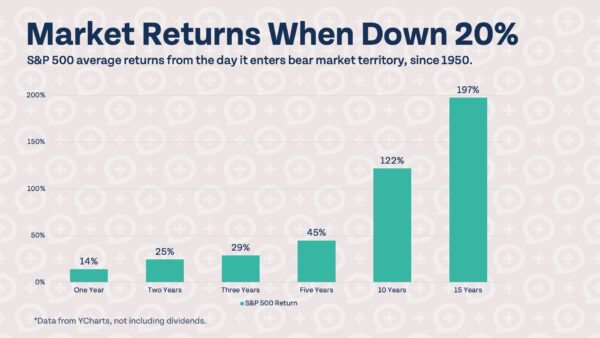Time IN the market is better than timING the market.
Are you worried about getting into the market at the “right time”? Historically, those who have stayed invested through the ups and downs of market volatility have been rewarded, even when compared to investors who attempted to time the market.
What is Timing the Market?
To be a successful market timer, you must buy assets when they are at their lowest price, let them grow, and then sell them when they are at their top price. While we do know that markets increase over the long-term (5-10 year timeframe), no one knows how short-term (daily – 5 years) market volatility will behave. If we knew how the stock market was going to act every day, market timing would be an easy feat. However, because markets are volatile and unpredictable in the short term, it is impossible to know the best time to get in and out.
Don’t Underestimate Emotions.
The majority of investors are emotional investors, which makes market timing really hard. When the stock market is doing well, most investors feel great because they see their account balances growing. As they experience this euphoria, instead of “selling high”, they are inclined to buy more into the market.
Conversely, when the stock market is doing poorly, many investors experience fear as they see their account balances drop. Mathematically, “sales” like these are the times to buy. However, many investors end up selling to make themselves feel better during this time of panic.
Is there an alternative to market timing?
Having the knowledge that investing can be unpredictable, volatile, and emotionally draining actually makes investing much easier for you. Brian and Bo are big fans of dollar cost averaging, or systematic saving. This process is nice because your emotions and decision making is done, allowing you to make logical decisions. When the market is doing well, you can feel good because you are participating in that growth. When the market is doing poorly, you can feel good because you are buying on “sale”. As the market grows over the long-term, you are able to be a part of it while efficiently put your army of dollar bills to work.
How do you dollar cost average? Set a savings goal (25% of your income, for example) and establish a regular savings pattern. This can be based on a date (i.e. same amount and date each month) or on an event (i.e. 25% of each paycheck). Most people dollar cost average naturally through 401(k) contributions (set contributions each paycheck) and IRA contributions (annual/systematic contributions). If you are saving to outside sources (i.e. a brokerage account), it may be worth setting up automatic withdrawal based on the timing of your paycheck.
Brian and Bo talk through the downsides to timing the market and how to make the most of your investments in the following videos!
Video: Stock Market is at an All-Time High! – Should You Be Worried?















